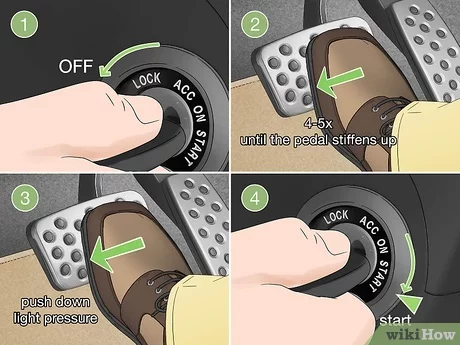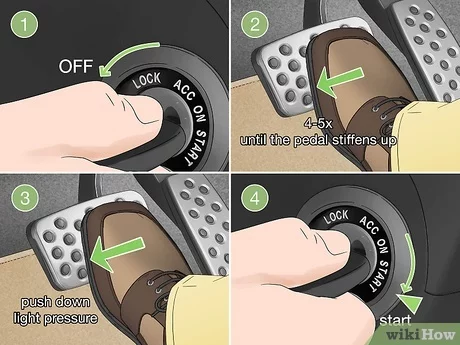The brake booster is an essential component of any vehicle’s braking system. It boosts the force that the driver applies to the brake pedal, allowing for a more efficient and effective stopping power. However, over time, the brake booster can experience wear and tear, leading to a decrease in its performance. Therefore, it becomes necessary to test the brake booster off the car to identify any issues and ensure its optimal functioning.
Testing a brake booster off the car may seem like a daunting task, but it is a relatively simple process that can be done with the right tools and knowledge. In this guide, we will take you through the step-by-step process of testing a brake booster off the car, including the tools you need, the signs that indicate a faulty brake booster, and how to fix any issues that arise during the testing process. By the end of this guide, you will have a better understanding of how to test a brake booster off the car, ensuring that your vehicle’s braking system is in top condition.
To test a brake booster off the car, you will need a vacuum gauge and a hand-held vacuum pump. Start by disconnecting the vacuum hose from the brake booster and connect the vacuum pump to the hose. Apply vacuum to the pump and observe the gauge. If the gauge shows a steady reading, the brake booster is working correctly. If the reading fluctuates, the booster may be faulty and need replacing.

How to Test a Brake Booster Off the Car?
Brake boosters are an essential component of your car’s braking system. They amplify the force you apply to the brake pedal, making it easier to stop the vehicle. However, just like any other part of the car, the brake booster can fail. In this article, we’ll explain how to test a brake booster off the car to determine whether it’s still working correctly.
1. Remove the Brake Booster
The first step in testing a brake booster off the car is to remove it from the vehicle. This involves disconnecting the brake lines and vacuum hose that attach the booster to the master cylinder and engine, respectively. Once you’ve removed the booster, you can then proceed to test it.
When removing the brake booster, be sure to use the appropriate tools and follow the manufacturer’s instructions. You may also need to remove other components, such as the master cylinder, to gain access to the booster.
2. Check the Vacuum
The brake booster relies on vacuum pressure to work correctly. Therefore, the first thing you should check when testing the booster is the vacuum. You can do this by connecting a vacuum gauge to the booster’s vacuum hose and checking the reading.
If the vacuum reading is low or nonexistent, it could indicate a problem with the vacuum line, engine vacuum, or the booster itself. Check the vacuum hose and fittings for leaks or damage, and ensure that the engine is producing the correct level of vacuum.
3. Inspect the Check Valve
The check valve is a crucial component of the brake booster that prevents air from entering the system. It’s located on the booster’s vacuum hose and should be inspected for damage or wear. A faulty check valve can cause a loss of vacuum pressure and affect the booster’s performance.
To inspect the check valve, remove it from the vacuum hose and check for any cracks or other signs of damage. You can also test the valve’s functionality by blowing into one end and seeing if air passes through the other end.
4. Check the Diaphragm
The diaphragm is the heart of the brake booster and is responsible for creating the vacuum pressure that amplifies the force applied to the brake pedal. It should be inspected for any signs of damage or wear, such as cracks or tears.
To check the diaphragm, remove it from the booster and inspect it for any visible damage. You can also test its functionality by applying suction to the vacuum port and checking if the diaphragm moves.
5. Measure the Booster’s Pushrod Length
The pushrod is the component that connects the brake pedal to the brake booster. It should be inspected for proper length, as an incorrect length can affect the booster’s performance.
To measure the pushrod length, use a caliper or ruler to measure the distance between the pushrod’s end and the booster’s mounting surface. Compare this measurement to the manufacturer’s specifications to ensure it’s within tolerance.
6. Test the Booster’s Performance
Once you’ve inspected all the individual components of the brake booster, it’s time to test its performance as a whole. You can do this by pressurizing the booster with a hand-held vacuum pump and measuring the amount of pressure it generates.
To test the booster’s performance, connect the vacuum pump to the booster’s vacuum hose and apply pressure. The booster should hold pressure for at least 30 seconds without leaking. If it doesn’t, it may need to be repaired or replaced.
7. Reinstall the Brake Booster
After testing the brake booster off the car, you can then reinstall it back onto the vehicle. Be sure to reconnect all the brake lines and vacuum hoses, and ensure that the booster is properly secured to the mounting bracket.
8. Benefits of Testing a Brake Booster Off the Car
Testing a brake booster off the car can help identify any issues before they become a safety hazard on the road. It can also save time and money by allowing you to diagnose and repair the issue without having to remove the entire braking system from the vehicle.
9. Brake Booster vs. Master Cylinder
The brake booster and master cylinder work together to provide the necessary stopping power for your vehicle. The master cylinder is responsible for converting the force applied to the brake pedal into hydraulic pressure, while the booster amplifies that pressure.
While both components are essential for proper brake function, a fault in the brake booster can affect the overall performance of the system. Therefore, it’s crucial to test the brake booster off the car to ensure it’s working correctly.
10. Conclusion
In conclusion, testing a brake booster off the car is a straightforward process that can help identify any issues before they become a safety hazard. By following the steps outlined in this article, you can ensure that your brake booster is working correctly and providing the necessary stopping power for your vehicle. Remember to always follow the manufacturer’s instructions and use the appropriate tools when working on your car’s braking system.
Contents
Key Takeaways: How to Test a Brake Booster Off the Car?
- Testing a brake booster off the car is essential to ensure it is functioning correctly before installation.
- One of the easiest ways to test a brake booster off the car is to use a hand-held vacuum pump to check the vacuum pressure.
- Another method is to use a pressure gauge to check the booster’s output pressure.
- It’s essential to check the brake booster for leaks, cracks, and other damage before testing to avoid any accidents.
- If you suspect that your brake booster is not functioning correctly, it’s best to replace it with a new one to ensure your safety.
- Always follow the manufacturer’s instructions when testing a brake booster off the car to avoid any damage or accidents.
- Testing a brake booster off the car is a simple process that can save you time and money in the long run by preventing any potential accidents or issues.
Remember to take all necessary precautions when working with brake boosters and consult with a professional if you are unsure about any aspect of testing or installation.
BRAKE BOOSTER PERFORMANCE CHECK- HOW TO TEST YOUR BOOSTER- BY THERAMMANINC.COM
In the world of car maintenance and repair, testing a brake booster off the car is an important skill to possess. This process helps to identify any issues with the brake booster before it is installed back into the vehicle. By conducting this test, you can ensure that the brake system is functioning properly and that you are providing a safe driving experience for yourself and others on the road.
To test a brake booster off the car, you will need to follow a series of steps carefully. These steps include disconnecting the brake booster from the brake pedal, applying vacuum pressure to the booster, and checking for any leaks. By taking the time to properly test the brake booster off the car, you can save yourself time and money in the long run by catching any potential issues early on. As a professional writer, I highly recommend that anyone who is working on a brake system takes the time to learn how to test a brake booster off the car to ensure safety and reliability on the road.

